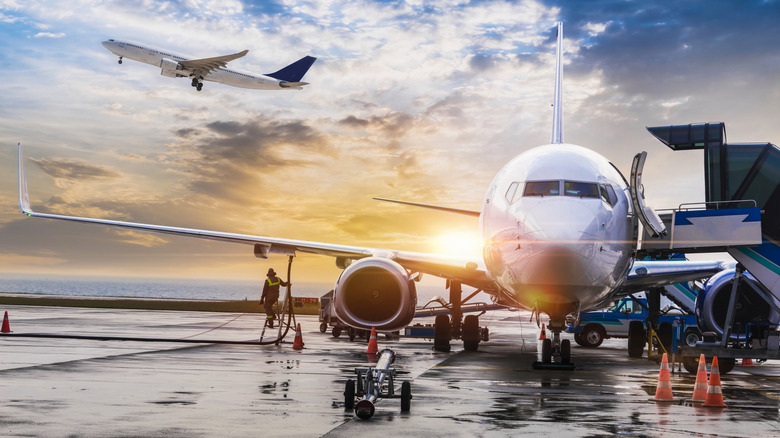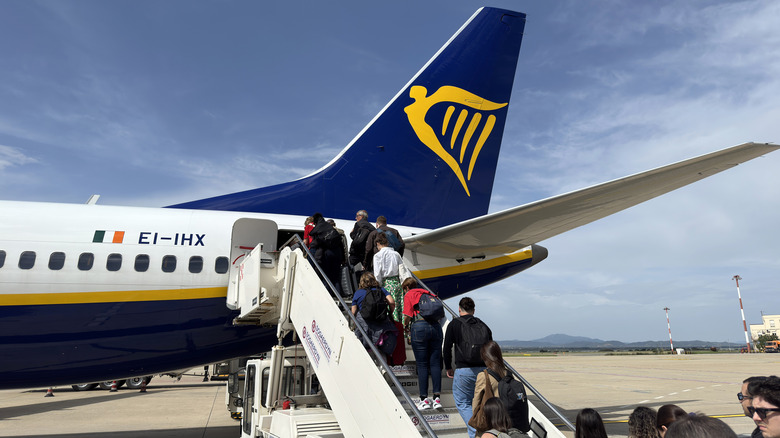The Real Reason We Always Board Planes On The Left Side
With all the logistics that go into air travel, one question is often up for debate: Why don't we board from the back to the front? But while you're standing in line, here's a better question: Have you ever noticed that we always board from the left side of the plane? It's apparently not random. It's primarily for passenger and crew safety. Most airports keep one side of the aircraft off-limits to prevent collisions and injuries.
While snagging a priority boarding group might feel like a win, the real purpose is to keep operations running smoothly and passengers out of the danger zone. Employees use the right side of the plane for refueling, catering, and loading baggage. Boarding from the left keeps passengers safely out of the way, speeds up ground operations, and maintains consistency across global airports.
So, why the left side specifically? As it turns out, the practice dates back to before planes even existed, when there were just ships at sea. Vessels always docked on the left (port) side because the steering oar was on the right, leaving the port side free for passengers and cargo. When aviation took off, it borrowed many maritime terms and practices, including boarding from the port side.
When can you board on the right side?
While it seems pretty standard to board on the left side of a plane, there are times when people board on the right side as well. Sometimes, on smaller regional jets such as the Mooney M-20, passengers may board from the right side instead due to the aircraft's design. These planes are typically built for efficiency and simplicity, and the placement of doors often depends on internal layout and access to controls or cargo space. In many cases, boarding from the right or rear is simply more practical given the aircraft's size and operational setup.
Right-side boarding can also occur in special circumstances, such as at remote airfields or smaller regional airports where jet bridges aren't available, and passengers board via mobile stairs. In these cases, airport logistics dictate the process rather than its maritime tradition. At the end of the day, it's not necessary to worry about the best time to board a flight, as long as you get to your plane on time and know what to expect. While these instances are rare in commercial aviation, they serve as a reminder that the left-side boarding standard, while widespread, isn't universal.
Want to know another lesser-known aviation fact? Here's one thing you should never ask a flight attendant right after boarding.

